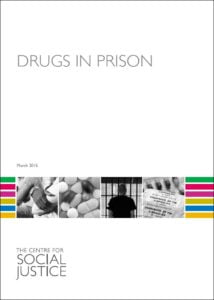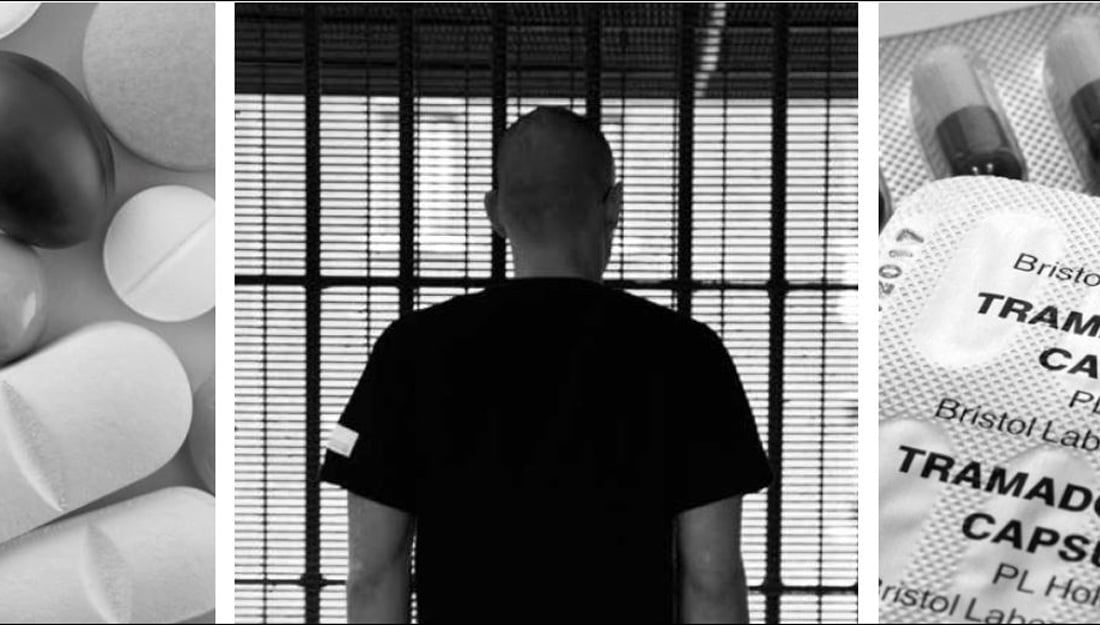Drug-fuelled prisons
A new report into Drugs in Prison from the Centre for Social Justice (a think tank formed by Iain Duncan Smith in 2004) sets out a three-pronged approach for tackling drugs in prison, and notes, sensibly that the three prongs are inter-dependent:
- Drugs must be kept out of prisons;
- Demand for drugs must be reduced;
- Drug addicted prisoners must receive effective support into recovery.
However, the report’s own press release and the media coverage concentrated almost exclusively on the first supply reduction goal, focusing on the introduction of body scanners.
The report
The report is based on the contributions from  respected organisations and individuals in the substance misuse field and includes academics and practitioners and also involved some interviews with prisoners.
respected organisations and individuals in the substance misuse field and includes academics and practitioners and also involved some interviews with prisoners.
Drugs have been a substantial problem in prisons for decades and Prison Inspection reports over the last eighteen months have highlighted the increasing ease with which drugs are available inside and the rapid growth in the use of Novel Psychoactive Substances (NPS or Legal Highs), particularly synthetic cannabinoids, primarily Spice.
The most recent Drugscope Street Drug Survey also highlighted the abuse of two anti-convulsant prescription drugs – pregabalin and gabapentin – inside.
The CSJ study reports that 31% of prisoners say it is easy to get hold of drugs in prison. Although there has been a recent increase in the number of seizures of drugs (see this post), it is clear that a tiny proportion of the drugs intended for prison are intercepted. The report suggests that corrupt prison staff are increasingly responsible for smuggling drugs into prison.
Although it is obvious that the main reason that such large quantities of drugs get into prison is to feed the demand of the many dependent drug users inside, it has long been a significant concern that as many as one in five heroin users took the drug for the first time in custody.
Recommendations
In addition to recommending the introduction of body scanners to every prison, the CSJ report makes a number of recommendations including:
- Improving the intelligence about drug use in prisons, partly by analysing waste water (to find out the concentration of different substances) and a more focused use of drug testing
- Making the smuggling of NPS into prisons illegal
- Stopping any maintenance-based drug treatment with a sole focus on abstinence and recovery (a hallmark of any CSJ report)
- Improve the quality of drug free wings
- Connect prison and community drug treatment better – including not releasing prisoners on Fridays when most services are shut over the weekend
- Ban smoking in prisons so that staff and prisoners are not exposed to Spice through passive smoking
Some (but by no means all) of these recommendations are rational and helpful. However, they all rely on the one thing which is in shortest supply in the modern prison service – funding. There used to be a number of high quality drug free wings in different establishments, but the reduction in staff numbers has meant only too often that drug free wings become the places in prison where drugs are most easily available.
Similarly, the cost of introducing body scanners is calculated at about £15 million before the costs of maintenance, staff training etc.
It is a shame that the report’s recommendations are not as balanced as its analysis of the drug problem in prison. It is important to restrict the supply and availability of drugs in prison, but our understanding of drug markets tells us this can never be fully achieved. It would have been good to have seen a recommendation for the availability of Naloxone pre-release to reduce the high number of overdoses and drug-related deaths shortly post-release.
Focusing on supply reduction is always the easiest political route but the hardest to achieve in practice.







5 Responses
I’ve heard from many people who were in prison in UK, that drugs, heroin, for example, is very much available, it’s just 10x more expensive than in the streets.
Having read the report and working within both the substance misuse sector within HMPs its bonkers that Body Scanners are being recommended. The most prevalent drug issue in HMPs are NPS and scanners cant pick these up. to introduce scanners would be a terrible waste of money and I would rather see n increase in searches, better sharing of the information between HMPs when new ways of supplying an HMP is identified and an increase the number of dogs to search cells and visitors.
Thanks for the comment Alex, that makes sense to me. Getting prisoners into treatment is the only long term strategy, although obviously keeping as many drugs as possible out of prison helps.
I have been both sides of the fence, quite literally. The trend in NPS consumption and the pregabalin etc is largely due to the lack of adequate testing around these substances, if the prisoners are going to avoid punishment for use they are likely to favour these drugs.
A similar situation occurred when drug testing in prisons was first introduced, prisoners started opting to use opiates as because of the length of time stored in the body they were more likely to avoid detection.
Perhaps prisoners who were both suspected and caught using substances were to receive compulsory education and groupwork around these issues then it would be tackling cause and not symptoms. Making no distinction between drug type would stop procedure dictating usage.
Government policy has lead to the rapid altering and strengthening of NPS, Prison disciplinary procedure has pushed prisoners to these dangerous drugs that are unregulated and many effects unknown.
the rising number of assaults and people being released with problems around this proves it.
If the money was spent on better education, better support networks in my opinion it would make much more difference than trying to prevent supply with such extravagant measures as the body scanners, there will always be a way around this, prisoners and addicts are very resourceful.
My opinion is that passive smoking of this being a problem is ridiculous, banning smoking in jail would cause major problems, the majority of prisoners smoke behind their doors when only the night clocky is on and blow out of the window so even he doesn’t smell it.
Hi Anthony
Thanks for you comment. I too have been around long enough to remember the concerns about people moving to heroin because it was out of their system quicker than cannabis when MDT was first introduced. I know RAPt has a new report (out tomorrow) expressing serious concerns about the use of NPS in prisons.
As always, treatment is likely to be the most effective option although reducing the availability of drugs inside obviously helps. Like you, I’ve yet to be convinced of the value of body scanners.